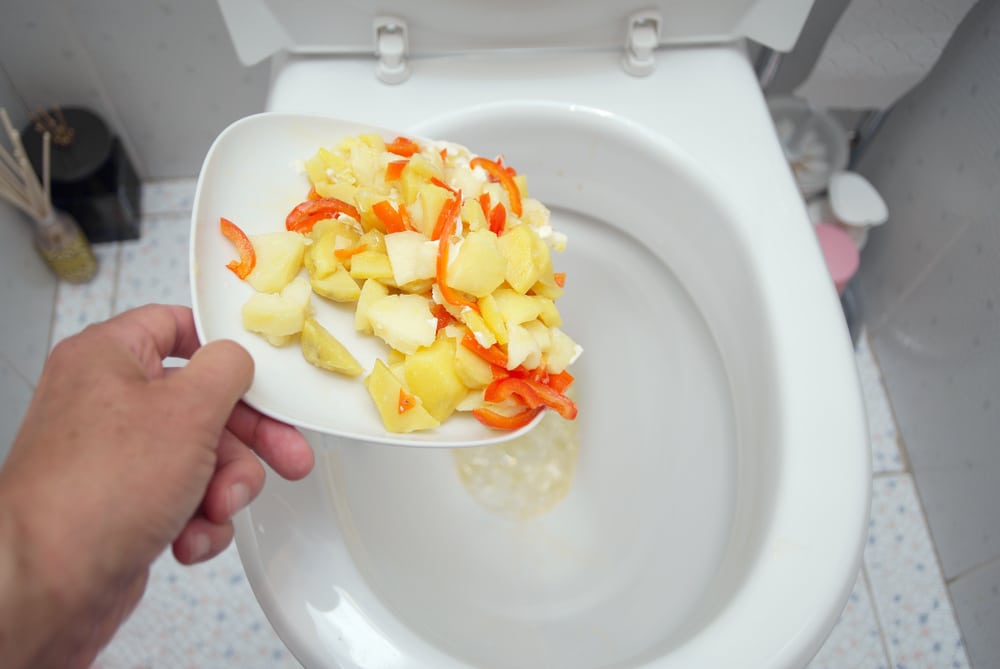Is it Allowed to Flush Food Down the Toilet?
Is it Allowed to Flush Food Down the Toilet?
Blog Article
What're your opinions on Think Twice Before Flushing Food Down Your Toilet?

Introduction
Many individuals are commonly confronted with the problem of what to do with food waste, especially when it comes to leftovers or scraps. One usual question that arises is whether it's alright to flush food down the toilet. In this short article, we'll look into the reasons why people might consider flushing food, the repercussions of doing so, and alternate approaches for appropriate disposal.
Reasons why individuals may take into consideration purging food
Lack of understanding
Some people may not be aware of the prospective damage caused by purging food down the bathroom. They might mistakenly believe that it's a safe practice.
Ease
Flushing food down the bathroom may appear like a quick and very easy option to throwing away unwanted scraps, specifically when there's no nearby trash bin available.
Laziness
Sometimes, people might merely choose to flush food out of sheer laziness, without considering the effects of their activities.
Consequences of flushing food down the toilet
Environmental impact
Food waste that ends up in waterways can contribute to air pollution and damage aquatic ecosystems. Furthermore, the water used to purge food can stress water resources.
Pipes problems
Purging food can bring about clogged pipelines and drains, triggering expensive pipes repairs and inconveniences.
Sorts of food that ought to not be purged
Fibrous foods
Foods with coarse appearances such as celery or corn husks can obtain entangled in pipelines and trigger clogs.
Starchy foods
Starchy foods like pasta and rice can take in water and swell, resulting in blockages in pipelines.
Oils and fats
Greasy foods like bacon or cooking oils should never ever be flushed down the bathroom as they can strengthen and cause clogs.
Proper disposal techniques for food waste
Making use of a garbage disposal
For homes equipped with waste disposal unit, food scraps can be ground up and purged through the plumbing system. Nonetheless, not all foods are suitable for disposal in this way.
Recycling
Particular food product packaging products can be reused, reducing waste and reducing ecological influence.
Composting
Composting is an environmentally friendly means to deal with food waste. Organic materials can be composted and made use of to enrich soil for horticulture.
The importance of appropriate waste management
Lowering environmental harm
Appropriate waste administration methods, such as composting and recycling, assistance decrease contamination and preserve natural deposits for future generations.
Protecting plumbing systems
By staying clear of the practice of flushing food down the commode, home owners can stop expensive plumbing fixings and preserve the integrity of their plumbing systems.
Final thought
To conclude, while it might be appealing to flush food down the commode for benefit, it is necessary to recognize the potential effects of this activity. By embracing correct waste administration techniques and throwing away food waste properly, individuals can contribute to much healthier pipes systems and a cleaner setting for all.
THINK TWICE BEFORE FLUSHING FOOD DOWN YOUR TOILET IN FALLBROOK CA
Let’s be honest, we’re really supposed to be tossing rotten or leftover food in the compost bin or trash can. But many people like to place scraps of food down the drain of, say, their kitchen sink. That’s why the garbage disposal was invented: so we can continue to place certain foods down the drain without clogging our drain in the process. Smart.
But not all of us have the luxury of having a garbage disposal installed. So, you might continue to shove food down your sink drain anyway – or worse: you might flush them down your toilet! If you’re guilty of doing the latter, you’re going to want to stop, and here’s why:
Toilet Drains Aren’t Designed to Handle Food!
There’s your answer: food just doesn’t belong in your toilet. It may seem like your toilet drain is wider than the drains of your sinks, but truth be told, that isn’t actually the case. The narrower pipes of your toilet leave your plumbing at risk for clogging if you do happen to flush your food. In addition, food doesn’t break down as quickly that toilet paper and human waste do. In turn, this leaves your toilet at risk for a nasty clog.
Although a flush of a tiny pinch of food every now and then isn’t going to completely damage your toilet, there are certain foods that should absolutely not be flushed in your toilet at all. These include starchy foods like mashed potatoes, grains, hard pieces of food that are slow to break down, and fats and oils.
The latter categories of food are particularly problematic as they may harden, expand as they absorb water, break down slowly in your system, or generally create the perfect obstruction with their gelatinous composition. These are all things you don’t want in your plumbing system!
Experiencing a Toilet Clog?
Nobody’s perfect, and we all make mistakes. Sometimes one of the mistakes people make is flushing food down their toilet and later realizing that it wasn’t the best thing to do once they see that their toilet is now clogged. Uh-oh!

Do you like more info about What Can Happen If You Flush Food Down the Toilet?? Make a short review directly below. We'd be delighted to hear your suggestions about this write up. Hoping that you come back again later on. In case you liked our page please consider to pass it around. I am grateful for being here. Revisit us soon.
Click Here Report this page